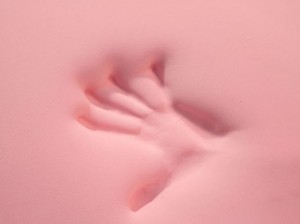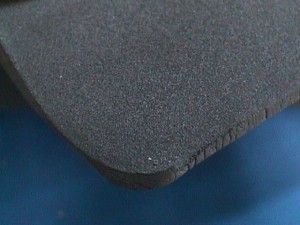Practice Makes Perfect With Foam Sports Padding and Backstops
As the saying goes, “practice makes perfect.” When we’re young, practice is usually seen as a chore, as we’re told to practice tying our shoes, practice our handwriting, and practice instruments we may not even want to play. But as we grow older, the things we practice are more frequently things we want to do, rather than what we need to do.
Getting better at sports is a great example, whether you’re working on lowering your handicap or practicing a wrist shot. Being able to practice becomes the next issue though, as most sports require significant space, with the throwing and hitting of balls and pucks. Unless you don’t mind your house’s siding or garage door peppered with holes and dents, the driveway and backyard aren’t going to cut it for some of these sports.
Fortunately, foam works in your favor when it comes to honing your craft. For those of us lacking a cornfield of dreams, a personal driving range, or year-round rink access, foam padded targets and backstops can help you practice at home, no matter the season or setting.
Professional athletes in golf, hockey, and baseball can hit, drive, and shoot balls and pucks farther and harder than most “mortals” could ever dream of. The longest homeruns can push 500 feet, top PGA golfers drive the ball more than 300 yards, and the hardest fastballs and slap shots in baseball and hockey both exceed 100 miles per hour on the radar gun. Weekend warriors don’t come close to touching these figures, but even at a fraction of the power and distance, it’s easy to see why practicing or playing needs to take place on large fields, ranges, and rinks, which require time, effort, and money to use.
The use of foam padding as a component in dedicated indoor practice areas can give individuals the ability to practice in a real-life fashion, while being safe, accessible, and affordable.
The use of memory foam is almost exclusively associated with mattresses and comfort and support products, but is surprisingly one of the best materials you can use in high-impact sports padding. Originally developed by NASA with the intent of reducing the severity of G-forces during takeoff, the material has advanced over the years to become incredibly resilient, durable, and impact absorbing. For padding indoor areas against pitches, hits, and slap shots, 4” of memory foam covered with a protective fabric will hold up to abuse, all while keeping your surroundings from being damaged.
Memory foam is substantially more energy absorbing than traditional foam, reducing the “bounce back” effect from a ball or puck. Memory foam will deaden a projectile without a return of energy in the opposite direction that will send it ricocheting across the room. The Foam Factory’s 3LB ViscoSaver memory foam is a high-density material in the broad spectrum of foam, but as the lowest density memory foam offered by The Foam Factory, it gives you performance without excessive cost. In a netted batting cage, 4” of 3LB memory foam can hold up to line drives, letting you practice real-life swings while also padding the backstop from the pitching machine’s tosses. For hockey, memory foam is an excellent wall padding, because while goals wind up in nets, misses deflect and fly everywhere. Covering a surface and making marks for the goal outline on the protective fabric gives you an accurate feel for practice, while preserving the area around you – a much safer alternative to the timeless hockey alternative of an old, open clothing dryer.
Golfers are faced with a similar issue working on their game, where practice that translates to real-world improvement generally requires a full-size area. Another foam type exists that can help you recreate a realistic practice area without losing a ball every time you swing, or sinking hours into your day just to get a few swings in.
Where memory foam excels with its blend of rigidity and absorption, neoprene sheets are fantastic golf shot padding because of their combination of flexibility and durability. In an adequately prepared space, hanging closed-cell neoprene 1-1/2” thick can stand up to the force of a tee shot, while flexing enough to envelop the impact. By hanging a sheet away from a solid surface, giving it the ability to wave, ripple, and flex, the shot pad can billow and bow when hit, dissipating the energy of the golf ball and dropping it safely to the ground. 1-1/2” of thickness gives you fabric-like flexibility with enough stability and resilience to keep balls from flying through the sheet foam as it flies back, or quickly damaging the foam itself. Using a sheet size based off the distance you’ll tee-off from, in concert with a contained side areas, you can practice full swings any season, place, or time you want!
While we will never be perfect at our favorite sports no matter how much we practice, we can have fun trying to get there, and with foam sports padding, you can improve your game and enjoy doing it on your own terms!
Note: The Foam Factory will not have any liability to anyone for incidental or consequential damages or any other liability, injury, loss or damage arising out of or related to our products, even if The Foam Factory or an authorized representative of The Foam Factory has been advised of the possibility of such damages.
Tags: Closed-Cell Foam, Foam Sheet, Memory Foam, Neoprene, Sports Padding
Posted in DIY, Health and Fitness




I am looking for material to back my golf simulator hitting screen and am interested in your closed-cell neoprene product. Can I get
this in a 9′ x 12′ size?
Currently our largest size is 48″x80″ in our neoprene product. The product can be glued together at the edges to cover larger areas. The spray adhesive we suggest is our 3M Super 77 spray adhesive.
How do you reccomend to hanging the closed cell neoprene product. If I punch holes in it and hook it will it tear away. Also do you have white?
You will need to test with the foam. If the foam starts to tear, then you will need to punch more holes to support the weight of the foam. We only have the dark charcoal color for our Neoprene-HQ.
Hi,
Just wondering which product would be suitable for shooting puck against in order to absorb impact and limit rebounding?
Thanks,
We have seen our 3LB density memory foam toppers3LB density memory foam toppers3LB density memory foam toppers used for golf ball strikes. The foam will need to be covered in a durable fabric like vinyl.
My husband is looking for 3mtsx3mts of foam for his golf simulator, can you give us a price please.
Please Contact Usfor pricing.
I’m interested in using this behind a golf simulator impact screen, it’s typically recommended there be 40-50cm of void between the screen and the wall behind, but I haven’t got enough room length so I’m keen to reduce as much dead space as possible.
If the ball is travelling at 160mph the moment it impacts your neoprene material, how much bounce back can be expected (assume the ball hits the neoprene directly, as opposed to a projector screen first). And would there be more or less bounce back, if the ball hits a projector screen with your neoprene material behind it?
Do you recommend the projector screen be touching (or even glued?) to the neoprene material, or there be some space between the projector screen and neoprene? And how much space should be left between the neoprene and the wall?
Do you think the 50cm space between wall and projector screen can be reduced down to 10cm (with the neoprene between the wall and screen)?
Thanks!!!
Please Contact Usfor more information regarding your application. Thank you!
Hi, What foam would be best suited to rebound field hockey balls ?
Please Contact Usfor more information regarding your application.